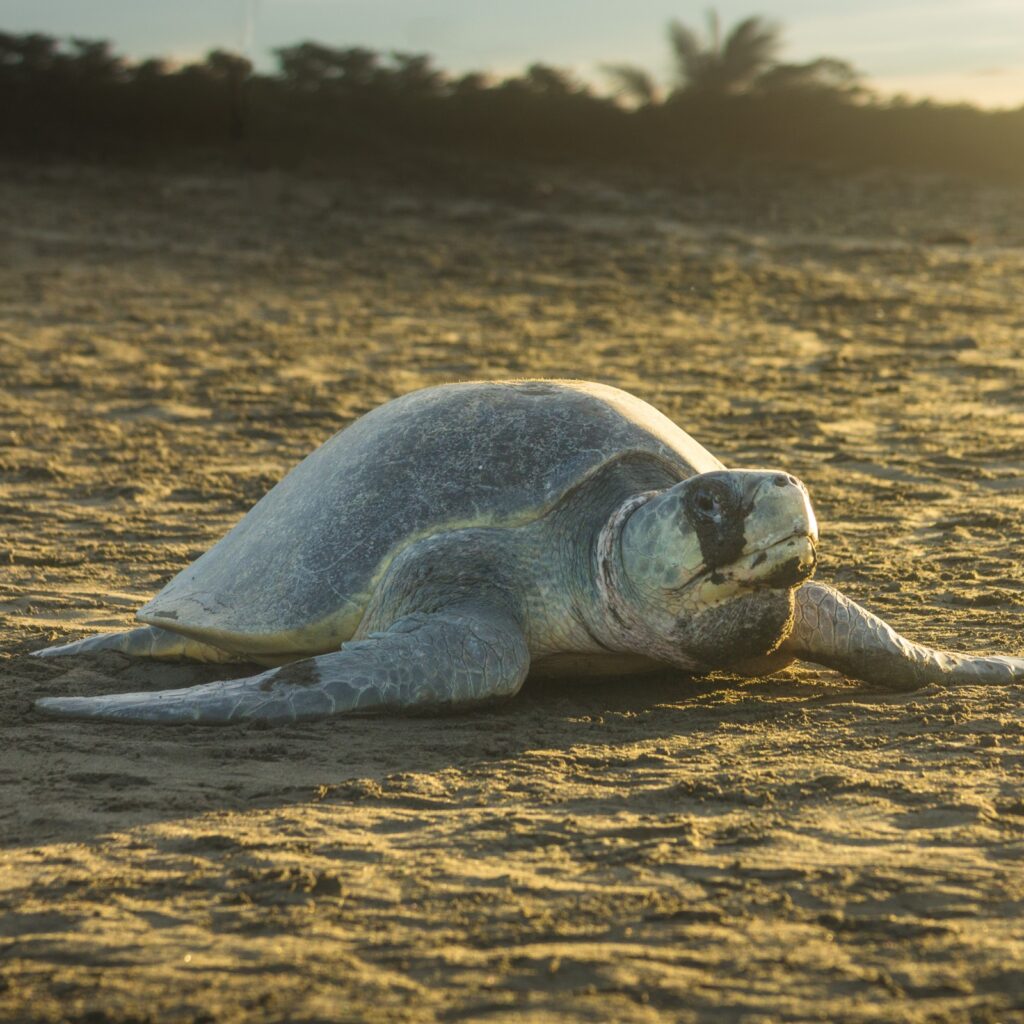OLIVE RIDLEY SEA TURTLE

One of the smallest sea turtles, Olive Ridleys usually reach about 70 cm (2.3 ft) in length and weigh up to 45 kg (100 lbs). Famous for their synchronized nesting events, known as arribadas, thousands of females come ashore together to lay their eggs. Although widespread in tropical oceans, Olive Ridleys face threats from egg poaching, entanglement in fishing gear, and habitat loss. Their populations are declining in several regions of the world.
Lepidochelys olivacea
Listed as Vulnerable on the IUCN Red List and included in CITES Appendix I, meaning it faces a high risk of extinction in the wild if threats are not addressed.
The Olive Ridley has a circumtropical distribution, inhabiting warm waters of the Pacific, Indian, and Atlantic Oceans. They are commonly found off the coasts of India, Japan, West Africa, and South and Central America, as well as throughout the Caribbean. Rare individuals have been recorded as far north as the United Kingdom.
- Adults: Heart-shaped, olive-colored carapace with 5 to 9 pairs of costal scutes on each side. Adults typically reach about 2 to 2.5 feet (up to ~75 cm) in shell length and weigh up to 110 lbs (50 kg).
- Hatchlings: Dark in color with a thin white border around the shell and flippers; average 1.5 inches (37–40 mm) long at birth.
Primarily carnivorous, Olive Ridleys feed on a variety of marine life, including tunicates, sea stars, sea urchins, sponges, squid, bivalves, snails, crabs, jellyfish, and fish eggs. They also occasionally consume algae, and cannibalistic behavior has been observed in captivity.
Famous for their arribadas—synchronized mass nesting events—thousands of females come ashore together to lay eggs. This unique phenomenon is shared only with the Kemp’s Ridley turtle.
- Olive Ridleys are the most abundant of all sea turtle species, yet their populations have suffered significant declines—over 30% in just one generation.
- Gahirmatha Beach in Odisha, India, is considered the largest nesting site in the world for this species.
- Despite their abundance compared to other sea turtles, habitat loss, bycatch in fisheries, and egg poaching remain serious threats.

